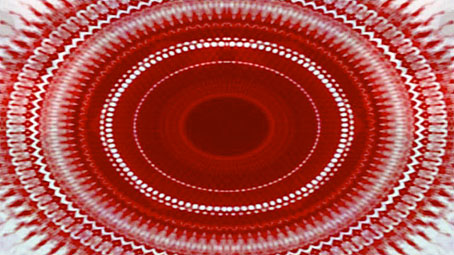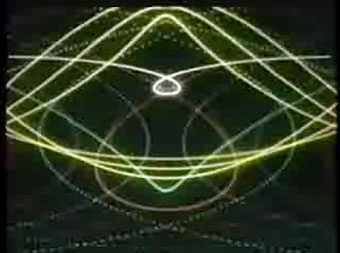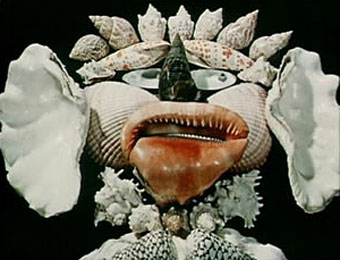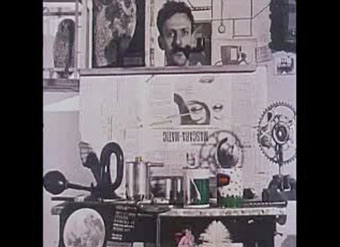Before the Law from The Trial (1962).
I’d wanted to write something about this pair of animators last year but at the time there was none of their work available for online viewing. This situation has now been remedied thanks to the ubiquitous YouTube.
This is Kafka-related once again since most people have seen Alexeieff/Parker’s work—if at all—in the prologue they provided in 1962 for Orson Welles’ film of The Trial. Alexandre Alexeieff was a Russian illustrator and animator who met Claire Parker, an American art student, in Paris in 1930. The pair formed a life-long partnership and together developed a new style of animation using a pinscreen, a white board containing thousands of pins whose shadows when pushed out of the board provide the grey tones required to create a picture. At the time they began working with this most animation was flat and cartoony; the pinscreen enabled them to create the kind of subtleties of shading seen in pencil and ink drawing. Many of the effects they created are stunningly lifelike.
The prologue for The Trial is a pictorial rendering of Kafka’s parable, Before the Law, which Welles narrates. This is an impressive piece (and I always loved the distinctive Piranesi-style walls) but for a real taste of their breathtaking skill you need to see Night on Bald Mountain, whose Goya-like transformations precede Disney’s Fantasia version by nearly a decade, or their adaptation of Gogol’s The Nose. It’s a shame that YouTube’s compression degrades much of the detail in these films, they really deserve to be seen on a bigger screen, but—as with many of these obscurities—it’s good to know they’re available at all.
Alexeieff and Parker on YouTube:
• Night on Bald Mountain (1933)
• En Passant (1944)
• Before the Law (1962)
• The Nose pt. 1 | The Nose pt. 2 (1963)
Previously on { feuilleton }
• Steven Soderbergh’s Kafka






